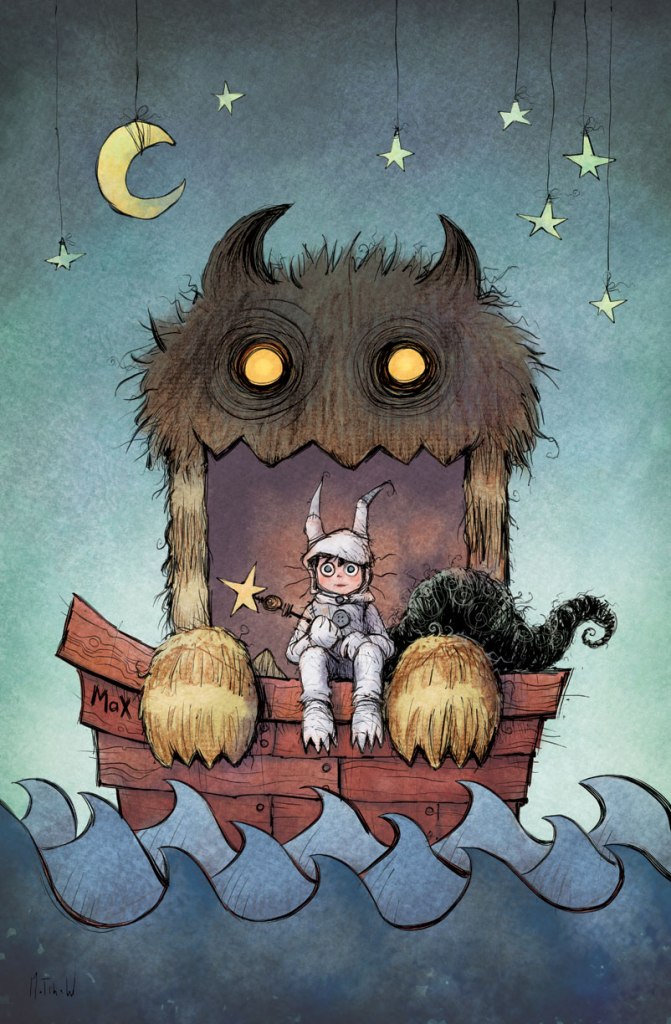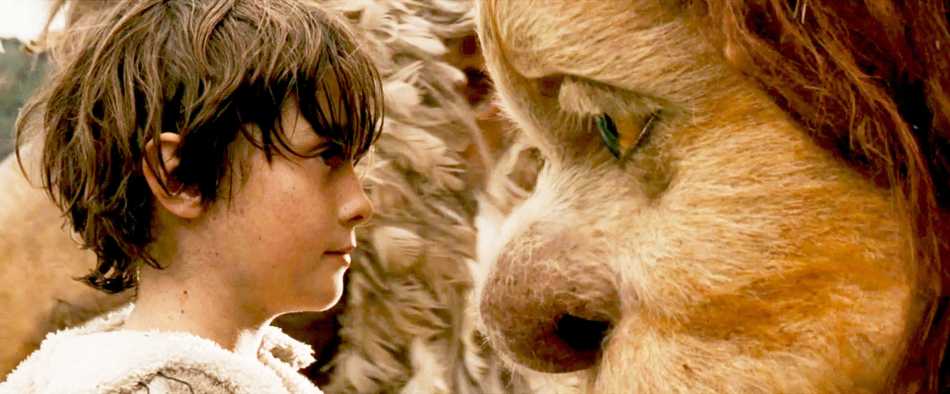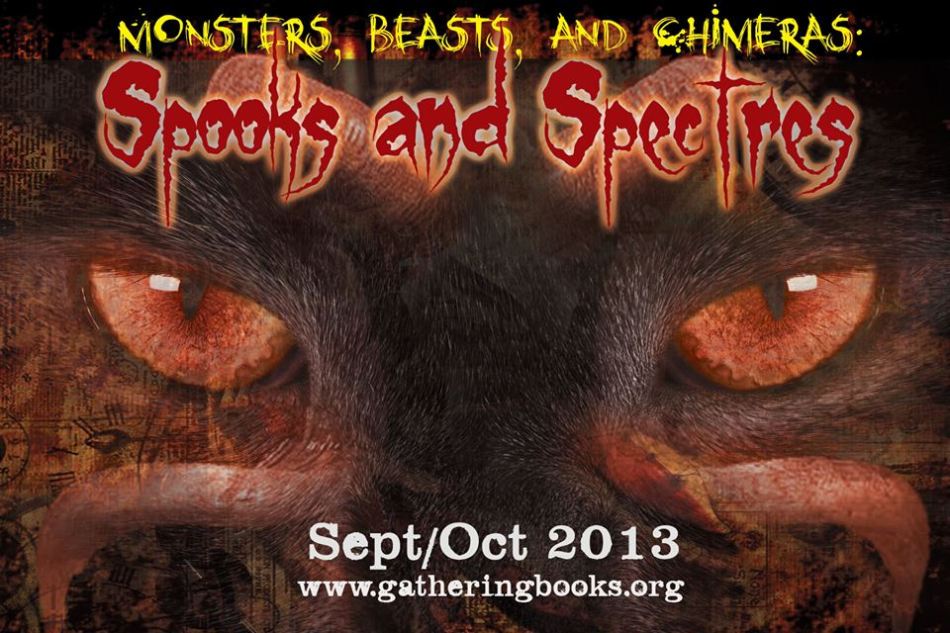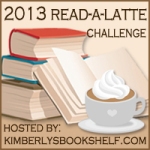Hello. Fats here.
We are not letting our current theme on Monsters, Beasts, and Chimeras: Spooks and Spectres go by without featuring one of the classics in children’s literature: Where The Wild Things Are by Maurice Sendak. The book was recognized as “the most distinguished American picture book for children” in 1963 and was awarded the Caldecott Medal in 1964.

There Were Dark Times and Then There Was Light
The journey of the Wild Things to success was not smooth. First published in 1963 by Harper & Row, Where the Wild Things Are was met with criticisms from book critics, teachers, librarians, parents, and child psychologists. It was banned from libraries for being “too dark.” In an article written by Francine Kaplan at JBooks.com, she mentioned:
“Child psychologist Dr. Bruno Bettleheim, who had not read the book, came out against it. Sendak was disparaged for portraying a disobedient youngster and creating images that could frighten an impressionable child.”
While these grown-ups had decided that Where The Wild Things Are was not meant for children, children of all ages loved, adored, and treasured Maurice Sendak’s groundbreaking work. The book eventually found its way back to libraries, received critical acclaim, and has been adapted into an animated film, an opera, and a full-length live-action Hollywood movie.
The “Unpleasant” Child and the Monsters of Childhood

“The night Max wore his wolf suit and made mischief of one kind and another
his mother called him “WILD THING!”
and Max said “I’LL EAT YOU UP!”
so he was sent to bed without eating anything.”
— Maurice Sendak, Where the Wild Things Are
I don’t remember how the idea of featuring Where the Wild Things Are came about. I only remember thinking that it was the perfect opportunity for me to watch the movie. I watched the movie the other night, the one directed by Spike Jonze in 2009. It takes about six to nine minutes to read the 40-page picture book, so you can imagine the liberty that Jonze took to expand the book into an hour-and-forty-minute-long feature film.

I find it amusing how adults had reacted over Max’s “wild side” in the book. The film certainly expounded on that, and I thought they did a good job illustrating Max’s mischievousness. People have argued that the book and the film were not for kids. While I have no direct quote of an adult’s negative response towards the book, I can surmise that part of the reason why the book was banned was because Max was a “bad apple” and his behavior would encourage children to be as just as “wild” – wreaks havoc, talks back to parents, and is physically violent.
“And the wild things roared their terrible roars and gnashed their terrible teeth and rolled their terrible eyes and showed their terrible claws.”
— Maurice Sendak, Where the Wild Things Are
Furthermore, adults probably found Sendak’s wild things too beastly and too monstrous for children. They are big and furry, have yellow eyes, horns on their heads, and sharp fangs and claws.

This, however, is what I think: children are naturally “wild.” They are a ball of infinite energy, full of spunk and wonder, are cunning and free-spirited. They can be mischievous at times but are not necessarily “bad.” This “wildness” is second nature to children. Max was just being … Max. He does what he does best: being a kid. And the wild things that parents and teachers fear? These are the monsters of childhood, the embodiment of children’s fears, borne out of children’s wits and imagination. Monsters “exist” because children believe in them, believe for them to be true.
“And the walls became the world all around.”
— Maurice Sendak, Where the Wild Things Are
Where the Wild Things Are is a book that is close to home. As a psych major, I could not help but give a Freudian reading of the book and the film. While watching the film, I was reminded of Guillermo del Toro’s Pan’s Labyrinth. The book did not mention anything about Max’s father, but it was suggested in the film. There was also no mention of a sister, but the film showed how Max’s sister refused to play with him and started hanging out with children her age. Max turns to his “wild side” and travels to the island of wild things as a means of dealing with family issues the way that Ofélia dealt with the hard life during the Civil War.
“These are difficult times for children. Children have to be brave to survive what the world does to them. And this world is scrungier and rougher and dangerouser than it ever was before.”
— Maurice Sendak

I believe that the wild things are also a reflection of Max’s emotions. He creates the island of the wild things to escape reality. He wants to find someone—or something—who would understand him or spend time with him. I was a quarter into the film when I found myself crying. Ah, the emotional junkie in me. I like the part where Douglas asked Max, “Will you keep out all the sadness?” To which Max replied, “I have a sadness shield that keeps out all the sadness, and it’s big enough for all of us.” Sendak’s and Jonze’s wild things are similar. At first look, yes, they are scary. In the book, you will see that these wild things know how to smile and have a good, “wild rumpus.” In the film, you will learn about their sadness, and how they do not want to be sad anymore. I say we should be mindful of the old adage, “Do not judge a book by its cover.”
Beyond the Pages of the Book
Here are a few “Wild” activities that parents and teachers can share with children:
>> Borders Stores provides a set of activity sheets in a downloadable PDF file.
>> United Teaching Discoveries shares some Arts and Crafts activities for kids.
>> Courtney from Bloesem Kids teaches you how to make a Wild Thing Tote.
>> Halloween is right around the corner. No costume yet? How about Max’s wolf costume? This simple DIY project might just be the thing you need!
Remembering Maurice Sendak
As a treat, here is the 1973 animated film and reading of Where the Wild Things Are. Hope you enjoy watching it!




What a very thorough review, baby girl. Thanks for including so many wonderful links too! 🙂 Lovely!
LikeLike
I love the book, but the movie scared me. (I was 7-8ish when I watched it) 🙂
LikeLike
Pingback: [Saturday Reads] My Top Forty (or so) Picturebooks and Graphic Novels (Part 3 of 3) – Gathering Books